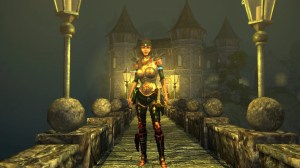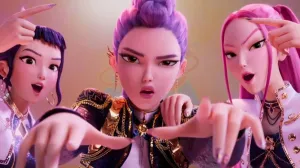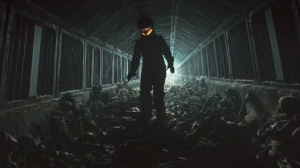When horror fans look back at the stories they were given in the 2010s, a number of prevailing themes emerge when it comes to what frightened audiences most. Over the course of the decade, audiences said goodbye to the found footage and “torture porn” trends, as the Paranormal Activity and Saw franchises stagnated, instead seeing both an embrace of styles that had dwindled in previous years, as well as ambitious filmmakers taking unconventional approaches to tales of terror. The growing number of platforms for horror stories saw the world of TV and streaming services compete for attention, but an impressive number of horror movies left an indelible mark on the genre on the big screen.
Videos by ComicBook.com
No matter where your interests were, horror this decade had you covered, whether you preferred monsters, murderers, or any other manner of mayhem. Additionally, some of the more successful outings saw compelling blends of humor and horror to create unique experiences, in addition to some filmmakers bringing an air of sophistication to the genre that other filmmakers may have potentially squandered.
Scroll down to see our picks for the best horror movies of the decade!
‘Black Swan’ (2010)

The decade kicked off with an undeniably horrific experience in Black Swan, sending audiences and its characters on a paranoia-driven descent into madness.
When a ballerina has a rare opportunity to secure a coveted role, her devotion to her craft begins permeating every corner of her life. The ballet’s dark subject matter takes a major emotional toll on her life, leaving her struggling to determine the difference between what’s real and what’s in her head.
Thanks to Darren Aronofsky’s compelling direction and Natalie Portman’s captivating performance, a narrative that could have turned into a campy experience was instead elevated to impressive levels, earning Portman an Academy Award for her performance and reminding the Academy how impressive and challenging the horror genre can be.
‘Kill List’ (2011)

Filmmaker Ben Wheatley delivered audiences multiple engaging genre experiences over the decade, from Sightseers to A Field in England to High-Rise to Free Fire, though it was his Kill List that cemented his skills in the genre.
As a hitman carries out a number of his deadly duties, some of his victims begin to tease that there is a greater purpose behind these hits, making him question if he’s merely a puppet being controlled by a higher figure.
Blending graphic violence with folk horror elements, Kill List managed to serve up an experience similar to films like The Wicker Man or Rosemary’s Baby, yet it still found a way to feel entirely fresh. Older fans appreciated the tribute to classic cult-themed horror film while fresher audiences were inspired to check out those classics.
‘The Cabin in the Woods’ (2012)

Joss Whedon built a devout following for himself thanks to the ways he blended genre elements with humor in TV series like Buffy the Vampire Slayer and Firefly, with The Cabin in the Woods, which he co-wrote with director Drew Goddard, managing to not only meets those expectations from his longtime fans, but completely surpass anything we could have imagined.
When a group of friends goes on a seemingly innocent vacation to a cabin in the woods, the audience begins to discover they are merely pawns of a much bigger scheme at play, all leading towards an immensely satisfying conclusion that satiated the wishes of all manner of horror fans.
Not only was the film an entirely entertaining experience, filled with both laughs and effective horrors, but what truly made the film stand out was its metatextual themes. Seasoned horror fans have seen countless stories unfold about college kids in the woods, with the film managing to address the well-worn elements of the genre to both satirize them while fully embracing them.
‘The Conjuring’ (2013)

Between films like Saw and Insidious, director James Wan proved himself on multiple occasions to be a seminal figure in the genre, but it would be his spin on a traditional haunted house film with The Conjuring that established him as one of the defining visionaries of the decade.
Inspired by the real-life paranormal investigations by Ed and Lorraine Warren, The Conjuring chronicles the pair coming to the assistance of a family who believes their home has been targeted by otherworldly entities.
A defining trait of Wan’s horror stories is the way he manages to get the audience to emotionally invest more into his immensely charming characters on screen than what his peers accomplish, while also delivering larger-than-life scares, whether those be pulled off with unsettling imagery or merely well-timed reveals. The success of The Conjuring led to multiple spinoffs and sequels, though none of them have come close to matching the effectiveness of the film that started it all.
‘The Babadook’ (2014)

Audiences who aren’t well-versed in the genre might dismiss what can be accomplished in horror films, seeing them as nothing more than an excuse to depict sex and violence. While that might be true in some cases, Jennifer Kent’s The Babadook might be the strongest example of the complexities that a tale of terror can contain.
While attempting to care for her young son, a single mother begins to witness a supernatural being tormenting her, with her troublesome child only exaggerating her trauma.
From the surface, The Babadook delivers a chaotic and unsettling horror tale about the monstrous Mr. Babadook permeating all components of a family’s life, though what truly makes it exceptional are the ways in which Kent can use the monster as a conduit for depression, grief, and the difficulties of being a parent, aided in large part by the tortured, captivating, and layered performance by Essie Davis.
‘It Follows’ (2014)

Teens being targeted by a terrifying threat is nothing new for the horror genre, but It Follows managed to embrace a nostalgic tone with its cinematography and score, all while reinventing the notion of an unstoppable being.
After sleeping with a boy she’s been seeing, a girl is then alerted to the fact that she has now become the target of an unstoppable monster. No matter what she does or how far she travels, nothing will stop this creature —which can take the shape of anyone — from pursuing her, with the only thing she can do to delay her demise is to sleep with someone, who will then become the monster’s new target.
The narrative serving as an allegory for the transition into adulthood and the threat of sexually transmitted diseases, as well as the entire notion of discovering one’s sexuality, makes for an ambitious experience for the genre, with the overall tone of the film striking the perfect blend of ’80s atmosphere and contemporary filmmaking techniques.
‘The Invitation’ (2015)

Despite the prominence of social media, it’s easy for former friends to grow apart, with Karyn Kusama’s The Invitation depicting an extreme example of why you might want to keep figures from your past at a distance.
A number of friends accept an invitation from a friend who had intentionally distanced themselves from the social group, only to learn that they had spent years pursuing enlightenment with a bizarre religious group. Despite claiming they have only wholesome intentions, the dinner guests begin to wonder if there are sinister motivations behind the dinner.
The biggest strength of The Invitation is how, from one scene to the next, the audience changes its mind regarding whether the dinner hosts have sinister motivations or if they are merely struggling to reconnect with people they used to hold so close to them. The performances, script, and direction all keep audiences on the edge of their seats, all leading to an unexpected and devastating reveal.
‘The Witch’ (2015)

Stories of witches have long played a part in pop culture and in horror movies, with Robert Eggers’ The Witch merely offering an immensely effective depiction of a traditional story of the dangers that lurk in the woods.
Becoming ostracized from their community, a family finds themselves living on the outskirts of town near woods that are rumored to be home to a sinister witch. As strange events begin to unfold, it’s unclear if the family’s poor fortune is the result of schemes by the witch or if a string of bad luck, along with paranoia, is to blame for their situation.
Despite the prominence of witches in scary stories for centuries, the overall experience of The Witch manages to strike fear into the hearts of audiences through a mastery of tone, atmosphere, and performances, delivering arguably the most effective tale of witchcraft that we’ve seen on the big screen.
‘Raw’ (2016)

Throughout the history of horror movies, there are some themes that are regularly explored, yet many of these stories fail to live up to the inherent terror those subgenres present. With Raw, audiences were given a cannibal story for the ages, all wrapped up in an immensely stylish experience.
When a veterinary student leaves home for university, she begins to experience an unexplainable and disturbing hunger, first satiating that desire in frowned-upon ways, only for those appetites to grow entirely out of control.
Stories about ghosts or murderers land in theaters with regular frequency, while cannibalistic tales are a much more difficult sell. While Raw is assuredly about a girl’s inhuman hunger, it represents any number of discoveries you might make about yourself and your family when you are forced to leave the innocence of childhood behind.
‘Green Room’ (2016)

Films like Murder Party and Blue Ruin proved filmmaker Jeremy Saulnier’s skills at reinventing traditional tales, but it was his gripping and harrowing Green Room that cemented him as one of the genre’s most promising auteurs.
Forced to take an impromptu gig at an intimidating venue, a hardcore band accidentally witnesses a murder, taking refuge in a small room as they are surrounded by a growing number of white supremacists. With the band running out of options by the moment, they are forced to find their way out or consider this their farewell tour.
The narrative is straightforward and relatable, as we’ve all been in a variety of situations where we knew we were in over our heads, with the story taking that inherent anxiety to frightening levels, making for one of the best siege thrillers fans have seen since John Carpenter’s Assault on Precinct 13.
‘Train to Busan’ (2016)

Thanks in large part to The Walking Dead, zombies are more popular than ever, though a number of movies offered little more than a formulaic exploration of the undead ghouls. Luckily, Train to Busan was up to the task of elevating the zombie subgenre to impressive levels, both with its action and emotion.
As the name implies, a zombie outbreak begins on a train head towards Busan, forcing the passengers to not only find a way to stay alive, but also attempt to prevent the unearthly disease from spreading.
While some audiences might consider an entire zombie film unfolding on a train limiting of such an adventure’s potential, Train to Busan offers one surprise after another, seeing the scenario as a strength more than a hindrance. More than just being an engaging action/horror hybrid, the emotional depths of the story are as powerful as the scares.
‘Get Out’ (2017)

Exceeding beyond just being relegated to one of the best horror movies of the decade, Get Out became a bonafide cultural phenomenon, confirming filmmaker Jordan Peele as an ambitious cinematic voice in his generation.
Visiting his white girlfriend’s family for the first time, a black man begins to notice bizarre clues about how her family might feel about their interracial relationship, only for those clues to be signifiers of truly horrifying machinations at play.
Few filmmakers in any genre have masterfully captivated audiences like Peele, constantly circumventing expectations to deliver audiences a completely twisted narrative. Additionally, Peele managed to address a number of societal issues by wrapping them up in an entertaining storyline, with Get Out and its many accomplishments likely to become studied for decades to come.
‘Hereditary’ (2018)

Harkening back to the pre-slasher days of the genre, Hereditary‘s success largely comes from a committed cast depicting a harrowing drama that was aided by supernatural events, resulting in a massively successful, and exhausting, ordeal.
After the death of their grandmother, a family struggles to cope with the loss, with her passing being only the first of a number of tragic events to unfold.
The debut feature film from Ari Aster drew from films like The Omen and The Exorcist in the ways that it avoided using any traditional genre tropes to convey its story, denying audiences the relief typically found from “fun” scares. Toni Collette’s unhinged performance was a tour de force, ultimately reminding audiences of how few things are as frightening as the things we can do and say to one another.
‘Mandy’ (2018)

Thanks to playing a number of colorful characters, Nicolas Cage is often regarded less as an actor and more as a cartoon, though Mandy and its psychedelic tale of revenge offered the actor the perfect opportunity to give genre fans ones of the most intense and emotionally crushing performances of his career.
After a couple becomes targeted by a bizarre religious group, their quest to obtain what they believe is rightfully theirs, the conflict results in a tragedy that sends Cage’s character on a path of vengeance.
It might be easy to dismiss Mandy as “the movie where Nicolas Cage has a chainsaw fight,” but the film manages to be so much more than that, while never scoffing at the idea of embracing the inherent camp. Thanks in large part to the direction of Panos Cosmatos and the score from Jóhann Jóhannsson, a relatively straightforward storyline becomes a spiritual awakening for audiences, as we become captivated by the lush visuals and deranged carnage unfolding scene after scene.
‘Suspiria’ (2018)

Following the acclaim he earned for Call Me By Your Name, Luca Guadagnino had the opportunity to pursue nearly any project he so desired, opting to craft a remake of Dario Argento’s masterpiece Suspiria, ultimately delivering a hypnotic and horrifying experience that embraced the spirit of the original while feeling entirely unique.
A promising ballet student heads to Germany to attend a legendary ballet school, only for strange occurrences to begin to unfold. The more time she spends at the academy, the more bizarre events befall her peers, with the school’s connection to witchcraft ultimately revealing the professors’ true intentions.
While the core narrative is essentially the same, Guadagnino masterfully reinvents a number of the film’s components to fully realize the horror of the concept’s potential, arguably to a more effective degree than even the original. Argento’s film is surreal and confounding, while Guadagnino’s take is bewildering and nightmarish, aided by a score from Radiohead’s Thom Yorke, which adds an enchanting and ethereal quality to the experience.








